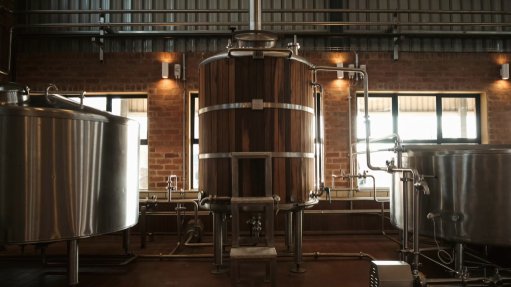Fuel efficiency driving composites demand
The global weight-saving revolution and the move towards increased fuel efficiency and environment friendliness in the automotive sector have resulted in increased demand for composites, notes US-based composites training provider Abaris Training Resources owner Michael Hoke.
He explains that automotive manufacturers are using composites in manufacturing processes, owing to the materials’ weight-saving potential, as many countries, including the US and some countries in Europe, have fuel-efficiency and emission standards that are being tightened to help fight global warming.
The New York Times reported in August 2012 that President Obama’s administration had issued the final version of new rules that required automakers to nearly double the average fuel economy of new cars and trucks by 2025.
The publication added that the standards, which mandate an average fuel economy of 54.5 miles a gallon for the 2025 model year, will increase the pressure on automotive manufacturers to fast-track development of electric vehicles and sharply improve the mileage of their mass-market models by implementing more efficient engines and lighter car bodies.
Therefore, Hoke explains, car manufacturers need to either reduce the weight of the cars or manufacture hybrid or battery- powered cars. “Employing composites, however, is a more viable alternative, as the materials are readily available,” he points out.
Hoke highlights that, owing to the price of composites, which is higher than that of steel or aluminium, car manufacturers have been hesitant to incorporate them, with the exception of race car manufacturers. That hesitancy, however, is on the wane, as composites seem to be the only viable solution to achieving fuel-efficiency standards.
While composites were previously mostly used in race cars, they are now increasingly considered for use in commercial vehicles, notes Hoke. “If these materials are intelligently used, they can save on weight. However, while the cost of composites is decreasing, it is not happening as quickly as manufacturers would like.”
He adds that research and development in the composites industry mostly centres on auto manufacturing. It aims to cut the costs of manufacturing composites and to enable quicker manufacturing of com- posite automotive parts to meet vehicle manufacturers’ production volume standards.
Hoke highlights that the US composites industry is experiencing much growth and innovation, driven by the automotive industry. “Car manufacturer BMW recently built a factory in Washington, in the US, to manufacture carbon fibre from raw materials. Its Washington manufacturing facilities are driven by hydroelectric power stations.
“An increase in the number of people trained to work in the US composites industry is also evident. Abaris Training Resources has many training programmes to ensure a thriving, innovative composites industry,” he says.
Hoke points out that growth in the US spacecraft industry is also evident, even though the National Aeronautics and Space Administration’s (Nasa’s) budget was cut about a year ago owing to the global economic downturn. Subsequently, Nasa is conducting only basic space research and farming out launch-vehicle projects to commercial companies.
“Many new small companies have been established as a result, building launch vehicles or satellites to conduct space exploration, send people into space and deliver cargo to space stations. As a fair number of those vehicles are manufactured from composites, Abaris Training Resources is also providing training for these new companies,” he notes.
Hoke adds that Abaris Training Resources implemented its Advanced Composites Manufacturing Programme last month. The programme entails three weeks of training, enabling students to gain enough skills to contribute to the composites industry.
He notes that interest in this course has been good and that South Africans can also attend it. Abaris Training Resources provides composites training for 65 countries.
Article Enquiry
Email Article
Save Article
Feedback
To advertise email advertising@creamermedia.co.za or click here
Comments
Press Office
Announcements
What's On
Subscribe to improve your user experience...
Option 1 (equivalent of R125 a month):
Receive a weekly copy of Creamer Media's Engineering News & Mining Weekly magazine
(print copy for those in South Africa and e-magazine for those outside of South Africa)
Receive daily email newsletters
Access to full search results
Access archive of magazine back copies
Access to Projects in Progress
Access to ONE Research Report of your choice in PDF format
Option 2 (equivalent of R375 a month):
All benefits from Option 1
PLUS
Access to Creamer Media's Research Channel Africa for ALL Research Reports, in PDF format, on various industrial and mining sectors
including Electricity; Water; Energy Transition; Hydrogen; Roads, Rail and Ports; Coal; Gold; Platinum; Battery Metals; etc.
Already a subscriber?
Forgotten your password?
Receive weekly copy of Creamer Media's Engineering News & Mining Weekly magazine (print copy for those in South Africa and e-magazine for those outside of South Africa)
➕
Recieve daily email newsletters
➕
Access to full search results
➕
Access archive of magazine back copies
➕
Access to Projects in Progress
➕
Access to ONE Research Report of your choice in PDF format
RESEARCH CHANNEL AFRICA
R4500 (equivalent of R375 a month)
SUBSCRIBEAll benefits from Option 1
➕
Access to Creamer Media's Research Channel Africa for ALL Research Reports on various industrial and mining sectors, in PDF format, including on:
Electricity
➕
Water
➕
Energy Transition
➕
Hydrogen
➕
Roads, Rail and Ports
➕
Coal
➕
Gold
➕
Platinum
➕
Battery Metals
➕
etc.
Receive all benefits from Option 1 or Option 2 delivered to numerous people at your company
➕
Multiple User names and Passwords for simultaneous log-ins
➕
Intranet integration access to all in your organisation


















